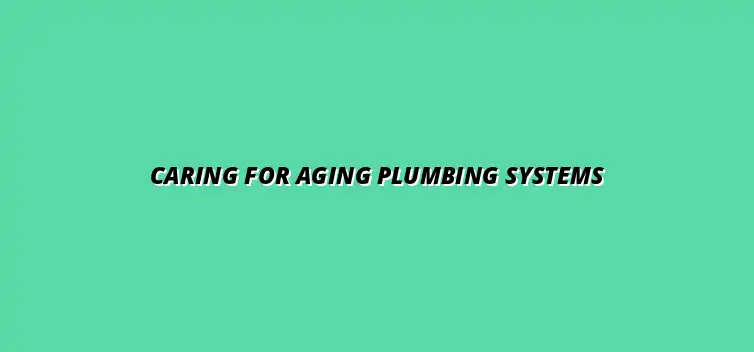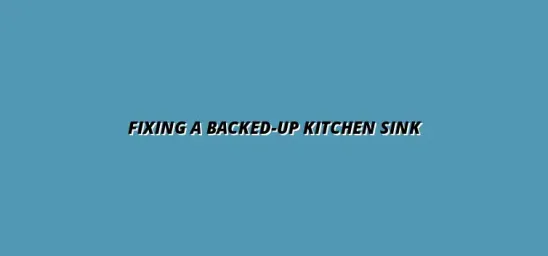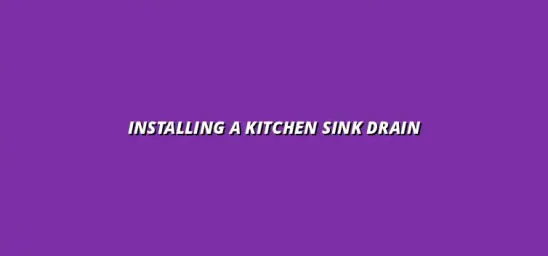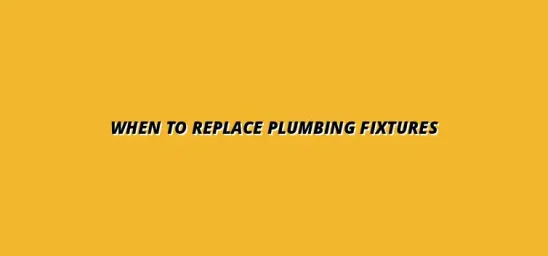
Caring for Aging Plumbing Systems
Understanding Old Plumbing Systems and Their Challenges
Have you ever thought about how old plumbing systems function? These systems, though they may be charming in their vintage style, come with their own set of challenges. Understanding the intricacies of these installations can help homeowners make informed decisions about maintenance and upgrades.
Old plumbing systems can vary significantly from modern ones. They often feature outdated materials and designs that may not hold up as well as contemporary plumbing solutions. This can lead to a range of problems, from leaks to decreased efficiency. Regular maintenance is key to preventing many of these issues, and a water heater maintenance routine is a great place to start.
Overview of Old Plumbing Systems
Old plumbing systems are fascinating yet complex. Typically, these systems were installed many decades ago and have been subject to wear and tear over the years. Because of this, it’s essential to know the unique characteristics of these older installations to manage them effectively.
Some of the primary characteristics of older plumbing installations include:
- Narrow pipes that may restrict water flow
- Less efficient drainage systems
- Older fixtures that may not meet current codes
Characteristics of Older Plumbing Installations
Older plumbing installations often reflect the building codes and materials of their time, which can be quite different from today’s standards. Many homes built before the 1970s were equipped with cast iron, galvanized steel, or lead pipes, all of which can present challenges. While they were durable, over time, these materials may corrode or degrade, leading to leaks and water quality issues.
Besides materials, the layout of old plumbing systems can also be a challenge. Pipes may be laid out in intricate patterns that can cause clogs or slow drainage. Understanding these layouts can help in troubleshooting when issues arise. For example, learning how to prevent clogged drains is crucial for older systems.
Common Materials Used in Vintage Plumbing
When we talk about vintage plumbing, certain materials often come to mind. Cast iron, for example, was widely used for drainage and waste lines. Though it’s strong, it’s prone to rust. Meanwhile, galvanized steel pipes, which were once popular for water supply lines, can develop leaks as they corrode over time.
Here’s a quick overview of some common materials in old plumbing:
- Lead: Highly toxic, this material was commonly used but can pose serious health risks.
- Cast Iron: Resistant to rust and durable but can crack or break under pressure.
- Galvanized Steel: Prone to corrosion, especially in areas with hard water.
The Importance of Regular Maintenance
Regular maintenance is crucial for extending the lifespan of old plumbing systems. Just like a car needs regular oil changes, your plumbing requires attention to remain in good working order. By keeping up with maintenance, you can catch issues before they escalate into more significant problems. This is especially true for essential kitchen plumbing maintenance.
Proper maintenance not only helps in prolonging the life of your plumbing but also improves its performance. Homeowners who invest time and effort into maintaining their systems usually find they are less prone to major repairs and disruptions. A seasonal plumbing maintenance checklist can be incredibly helpful.
How Maintenance Affects Longevity and Performance
When you regularly maintain your plumbing system, you’re ensuring its longevity and optimal performance. Regular checks can identify small leaks or weak spots before they become major headaches. Moreover, clean pipes can improve water flow and reduce the risk of clogs. Don't forget the importance of essential bathroom plumbing maintenance as well.
Here are some key benefits of maintaining your plumbing:
- Increased lifespan of pipes and fixtures
- Lower utility bills due to improved efficiency
- Peace of mind knowing potential problems are addressed
Consequences of Neglecting Old Plumbing Systems
Neglecting your old plumbing system can lead to serious repercussions. Over time, minor issues can develop into significant problems, resulting in costly repairs or even damage to your property. It’s far easier and cheaper to address small issues than to wait until they become major headaches!
Some of the common consequences of neglect include:
- Frequent leaks that can cause water damage
- Increased risk of mold and mildew growth
- Higher water bills from inefficient systems
Addressing Common Concerns with Old Plumbing Systems
Old plumbing systems can bring up many questions and concerns for homeowners. Understanding the ins and outs of maintaining these systems is crucial to ensuring they function properly over time. In this section, we'll tackle some of the most frequently asked questions and help you decide when to seek professional help versus rolling up your sleeves for some DIY maintenance!
FAQs Related to Old Plumbing Maintenance
One of the first questions homeowners often have is about the lifespan of old plumbing materials. The longevity of these systems can vary significantly based on the type of materials used and the level of care provided. Generally, you can expect:
- Cast iron pipes to last around 75 to 100 years
- Lead pipes to last about 100 years but pose health risks
- Galvanized steel pipes to last roughly 20 to 50 years
What Are the Typical Lifespans of Old Plumbing Materials?
Knowing the lifespans of old plumbing materials helps you plan for replacements. For example, if you have galvanized steel pipes nearing the end of their expected life, it may be time to consider replacement options. By being proactive, you can avoid unexpected leaks or costly repairs down the line. Regular flushing can also help extend the life of your water heater; check out this guide on how to flush your water heater easily.
When Should I Consider Replacing Old Plumbing?
It's vital to keep an eye on your plumbing system. Here are a few signs that could indicate it's time for a replacement:
- Frequent leaks or water damage
- Low water pressure or discolored water
- Visible rust or corrosion on pipes
Professional Help vs. DIY Maintenance
Sometimes, a plumbing issue might seem simple, but it could be more complicated than it appears. Knowing when to call a professional plumber can save you time, money, and frustration. If you notice persistent leaks, an unusual increase in water bills, or major clogs that won't resolve with basic methods, it’s probably time to reach out for help! For example, if you're in the Birmingham area and need help, consider searching for a " plumber in Billesley, Birmingham".
Understanding When to Call a Professional Plumber
Here are some scenarios where hiring a professional plumber is recommended:
- Complex repairs involving multiple systems
- Installation of new plumbing fixtures or appliances
- Health hazards from lead or sewage issues
DIY Maintenance Tips for Homeowners
For those who enjoy DIY projects, maintaining your old plumbing systems can be both rewarding and cost-effective. Here are some simple tips you can implement:
- Regularly check for leaks and fix them promptly
- Clear drains with natural solutions like vinegar and baking soda
- Keep an eye on water pressure and report any issues
Ensuring Long-Term Health of Your Plumbing
Maintaining the health of your old plumbing systems is essential for avoiding costly repairs and preserving your home's value. Creating a regular maintenance routine can help you stay ahead of potential issues. Let's explore how to set up a schedule and plan for future upgrades!
Creating a Maintenance Schedule
Establishing a maintenance schedule is a great way to keep your plumbing in tip-top shape. Regular inspections can help you spot problems before they escalate. Here’s how to develop a routine:
- Set a specific time each year for a comprehensive inspection
- Check all visible pipes and fixtures every six months
- Document any repairs and maintenance work done
How to Develop a Routine for Plumbing Inspections
When creating your inspection routine, consider factors like the age of your plumbing, your local climate, and any previous issues. This way, you can tailor the approach to your home’s specific needs. Having a plan will make it easier to stay consistent and proactive!
Documenting Maintenance and Repairs for Future Reference
Keep a log of all inspections and repairs to track the health of your plumbing system. This documentation will not only help you remember what actions you've taken, but it can also be beneficial if you ever decide to sell your home. Buyers appreciate knowing that the plumbing has been well cared for!
Planning for Future Upgrades and Replacements
As you maintain your old plumbing systems, it's also wise to plan for future upgrades or replacements. This foresight can save you from having to deal with emergencies later. Let’s discuss budgeting and identifying modern alternatives to old plumbing solutions.
Budgeting for Future Plumbing Projects
When planning for upgrades, create a budget that covers potential projects. This might include:
- Replacing old fixtures with modern, efficient ones
- Upgrading pipes to more durable materials
- Investing in regular professional inspections
Identifying Modern Alternatives to Old Plumbing Solutions
Exploring modern plumbing solutions can enhance both efficiency and reliability. Some alternatives to consider include:
- PEX pipes, which resist corrosion and are easy to install
- Low-flow fixtures that conserve water
- Smart home technologies for monitoring water use
Final Thoughts on Maintaining Old Plumbing Systems
To sum it up, taking care of your old plumbing systems doesn't have to be daunting. With proper maintenance and an understanding of when to seek help, you can keep your plumbing in great shape for years to come! Proactive care is key!
Summarizing Key Maintenance Strategies
Remember, the best strategies for maintaining old plumbing include:
- Regular inspections and prompt repairs
- Managing water pressure
- Keeping drains clear and clean
Encouraging Proactive Care for Longevity
By being proactive, you can avoid headaches and costly repairs. Investing time and effort into understanding your old plumbing systems will ensure they serve you well for a long time. Happy plumbing!





Fixing a Backed-Up Kitchen Sink
Prepare Your Plumbing for Weather
Installing a Kitchen Sink Drain
When to Replace Plumbing Fixtures
Fixing a Jammed Garbage Disposal